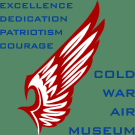Early warning of approaching aircraft was recognized as a priority as early as WW1. Before radar, one of the methods that was used was sound detection. Before modern electronics, these "ear amplifiers" might be manned (literally) to detect the sound of noisy aircraft engines approaching.
As is so often the case, warfare drove the advance of technology. Here the amplifiers were "miniaturized" by folding the hearing tubes (into a trumpet shape)and by making them "portable" by mounting them on trailers.
In the early stages of WW2, radar was not yet perfected and all sides developed and used sound tracking as an early warning aid. Like early radars, instructions from sound directors would be passed to banks of search lights. Actual targeting of an aircraft was done visually from the anti-aircraft gun position, after the aircraft was illuminated.
Air Raid warnings saved many lives by allowing personnel to take cover before the arrival of bombers.
Driven by the demands of war, the rapid development of radar soon obsoleted aircraft spotting by sound.
Thanks Phil for sharing this history lesson with us.











































